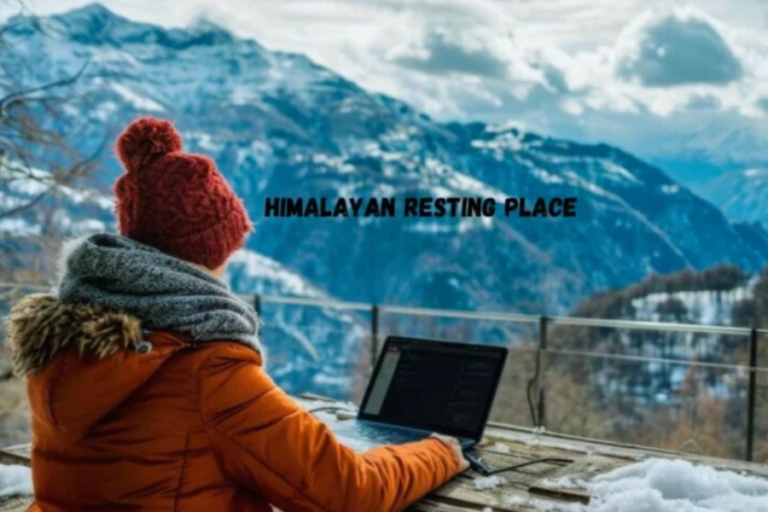Blisterata Demystified: Causes, Diagnosis, and Effective Treatment
Blisterata causes fluid-filled blisters on the skin, leading to discomfort. This guide covers its causes, symptoms (like redness and swelling), diagnosis (visual exams, lab tests), treatments (topical meds, rest), and prevention (hygiene, protective gear). Adhering to these measures helps manage symptoms and promote recovery.
Factors Leading to Blister Formation
Blisterata can arise from various factors, each contributing to the formation of fluid-filled blisters:
The Role of Friction in Physical Interactions
Friction from activities like running or wearing poorly fitting footwear can cause significant skin damage and lead to blister formation. Continuous rubbing or pressure, especially on high-friction areas like the feet or hands, irritates the skin and causes layers to separate, allowing fluid to accumulate and form blisters. Preventive steps such as wearing well-fitted shoes and using protective padding or lubricants in vulnerable areas are essential to reduce friction-related blisters and maintain skin integrity during physical exertion.
Understanding the Causes of Burn Injuries
Thermal, chemical, or sunburns can trigger blister formation as a protective response by the body. Exposure to intense heat, chemicals, or prolonged sun rays can damage the skin’s outer layers, prompting fluid accumulation beneath the affected area to create a protective barrier. This blistering shields underlying tissues from further harm and facilitates healing of the skin underneath. Effective management involves immediate cooling or rinsing with water for thermal and chemical burns, and applying soothing lotions like aloe vera for sunburns. Preventive measures such as regular sunscreen application and wearing protective clothing are crucial in minimizing the risk of blister formation due to sun exposure.
Relationship Between Allergic Reactions and Infection Risks
As a result of infections caused by bacteria or fungi and allergic reactions to things like poison ivy, blisters can form on the skin. When it is touched, poison ivy triggers an immune response that frequently results in redness, itchiness, and blistering. Then again, bacterial or contagious diseases instigate irritation and liquid gathering, inciting the development of rankles as a defensive component. Preventive measures focus on avoiding known allergens and adhering to best hygiene practices, while treatment typically entails medication to ease symptoms and speed healing.
Identifying Symptoms and Diagnostic Methods
Symptoms:
Pain, redness, and swelling accompany blister formation on the skin, which is characterized by fluid-filled sacs. These rankles can be brought about by grating, consumes, sensitivities, contaminations, or other skin aggravations. Sizes can vary widely. Redness and swelling are caused by the body’s inflammatory response to the underlying cause, while pressure on nerve endings or irritation of the skin cause pain. A diagnosis is made through a physical examination and, if necessary, additional tests to figure out the best way to treat symptoms and heal.
Diagnosis:
To determine the cause of blisters, a thorough medical history review, thorough physical examination, and occasionally the use of diagnostic tests like cultures or blood tests are all necessary. The underlying causes of blister formation, such as infections, allergies, or other medical conditions, can only be identified through these evaluations. Healthcare professionals are able to effectively tailor treatment plans to address the underlying issue and promote optimal healing and symptom management by locating the specific cause.
Exploring Therapeutic Approaches
Natural Solutions for Home Care
It is essential to follow specific blister care instructions to aid in healing. Refraining from popping blisters, which can impede healing and increase the risk of infection, and gently cleansing the affected area to prevent infection are essential steps. Antibiotic ointments can support recovery and help maintain cleanliness. Moreover, resting and refraining from activities that might aggravate or rub against the blistered skin are essential to allow uninterrupted skin healing. These steps collectively promote the natural healing process and reduce discomfort associated with blisters.
Clinical Treatments and Interventions
In extreme instances of rankles, clinical mediation might be fundamental, which could include depleting the rankles under sterile circumstances to ease pressure and advance recuperating. If the blisters are large or have already become infected, healthcare providers may also prescribe antibiotics to treat or prevent infections. The affected area can be shielded from further damage with advanced dressings. In order to effectively manage cases of severe blisters, reduce complications, and ensure proper skin healing, these interventions are essential.
Proactive Measures for Prevention
Choosing the Right Footwear for Optimal Support
To keep your feet sound, it’s vital to wear shoes that fit appropriately and transform them frequently. Shoes that fit properly help to prevent blisters caused by pressure and friction, especially when walking or running. If worn-out shoes are replaced frequently to ensure that they continue to provide adequate support and cushioning, they are more likely to cause discomfort or blisters. This training improves in general foot solace as well as supports a functioning way of life by limiting pointless distress and advancing foot wellbeing.
Maintaining Cleanliness and Health Practices
Keeping up with perfect and dry skin, particularly in regions inclined to high grinding, is fundamental for forestalling rankle development. Washing these areas on a regular basis helps get rid of sweat, dirt, and bacteria that can cause skin irritation and blister formation. When the skin is dry, moisture-related friction, which is a common cause of blisters during exercise or in humid environments, is reduced. Additionally, using talcum powder or socks with moisture wicking properties can aid in the absorption of excess moisture and further decrease friction, thereby enhancing skin comfort and reducing the likelihood of blisters. These straightforward methods of hygiene promote healthy skin and make daily activities more bearable.
Ensuring Safety Through Protective Measures
Blister prevention tapes, padded insoles, gloves, and other protective gear can effectively reduce blister risk during activities. Skin harm and rankle development are forestalled by wearing gloves, which go about as a boundary between the hands and expected aggravations or surfaces that cause erosion.Padded insoles cushion the feet and provide support while also absorbing shock and reducing pressure points that can cause blisters, especially when walking or running for an extended period of time. When applied to blister-prone areas of the skin, blister-prevention tapes create a barrier that aids in maintaining the integrity of the skin and reduces friction. Comfort and skin health are both improved by these preventative measures, which are especially beneficial for athletes and other people who engage in high-friction, repetitive activities.
Complications and Recovery
Complications:
Blisters that are treated improperly run the risk of complications like infection, scarring, and delayed healing. It’s significant to keep up with tidiness by delicately purging the impacted region and applying suitable dressings to shield it from additional disturbance. To avoid complications and speed up recovery, it’s important to avoid activities that can aggravate blistered skin. Individuals can reduce risks, speed up blister healing, and ensure optimal skin health and comfort by prioritizing these measures.
Recovery:
Effective blister care necessitates rest, good hygiene, and prompt medical attention in the event of complications. The skin can heal without being disturbed by rest, and keeping it clean helps prevent infections and supports the healing process. If blisters show signs of infection like increased redness, warmth, the presence of pus, or persistent pain and swelling, you should see a doctor right away. Early medical intervention can minimize discomfort and improve skin health by preventing complications, ensuring proper management, and expediting recovery.
By following these guidelines, individuals can effectively manage Blisterata and reduce its impact on daily activities and overall well-being.
FAQs:
What is Blisterata?
Blisterata is a condition characterized by the formation of fluid-filled blisters on the skin, often caused by factors like friction, burns, allergies, infections, or other irritants.
What are the symptoms of Blisterata?
Symptoms include redness, swelling, and the development of fluid-filled sacs (blisters) on the skin. Pain may accompany these blisters, especially when pressure is applied.
How is Blisterata diagnosed?
Diagnosis involves a medical history review, physical examination, and sometimes diagnostic tests like cultures or blood tests to identify the underlying cause, such as infections or allergies.
What treatments are available for Blisterata?
Treatment options include topical medications, rest, and sometimes prescription antibiotics for infections. Proper care involves keeping the affected area clean, avoiding popping blisters, and using protective measures to promote healing.
How can Blisterata be prevented?
Preventive measures include wearing properly fitted shoes, maintaining good hygiene, using protective gear during high-friction activities, and avoiding known allergens or irritants.
Summary:
Blisterata is portrayed by liquid filled rankles on the skin because of different elements like grating, copies, sensitivities, and contaminations. Dealing with this condition includes grasping its causes, perceiving side effects like redness and enlarging, and utilizing viable indicative and treatment techniques. Topical medications, rest, and preventative measures like hygiene and protective gear to ease discomfort and speed healing are all examples of these. Infections and other complications are less likely to occur if you seek prompt medical attention for complications. By adhering to these rules, people can successfully oversee Blisterata and keep up with skin wellbeing, supporting a functioning and agreeable way of life.
Stay informed with the most current global news and insights at GermanyTribune.com.






